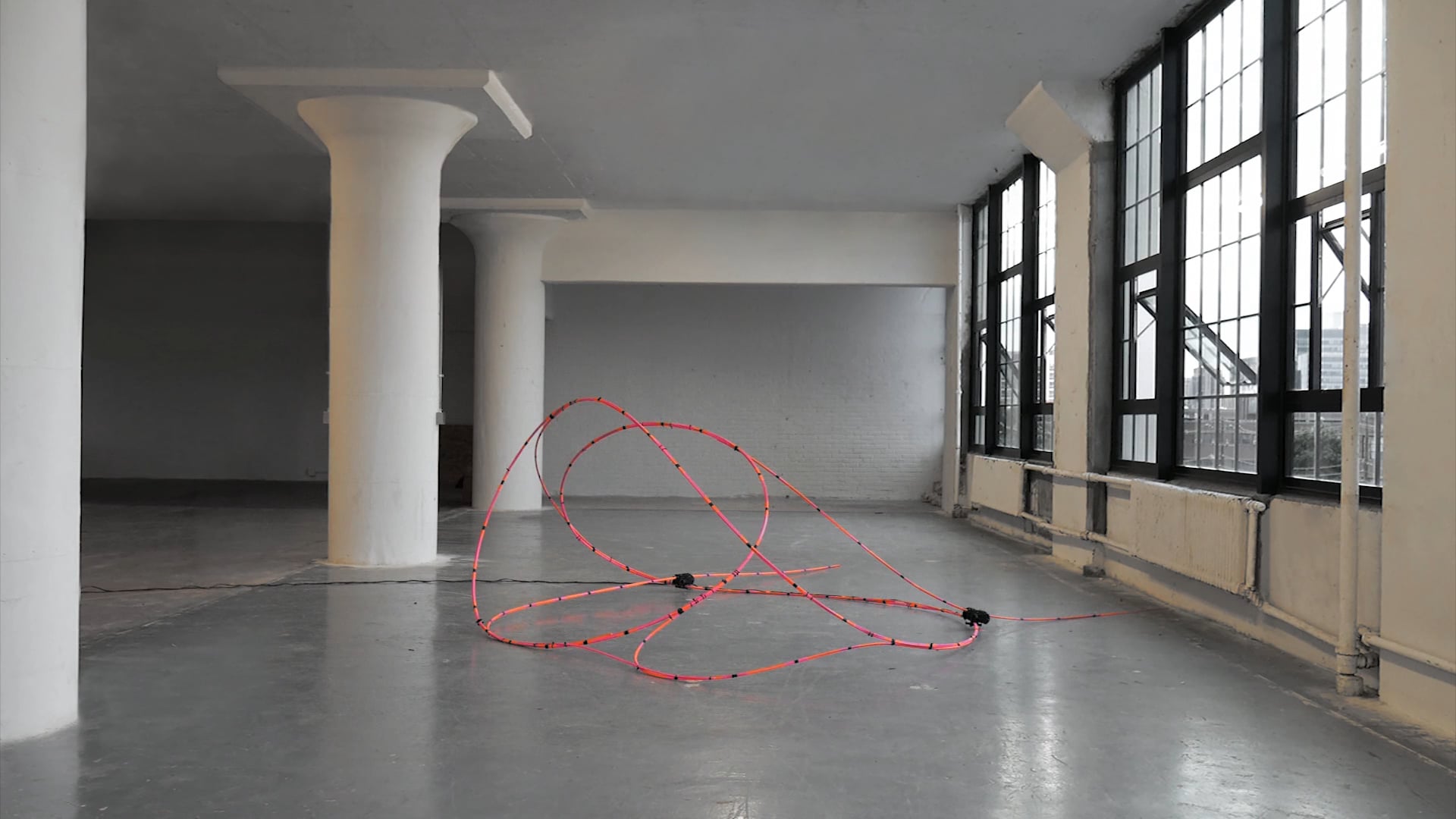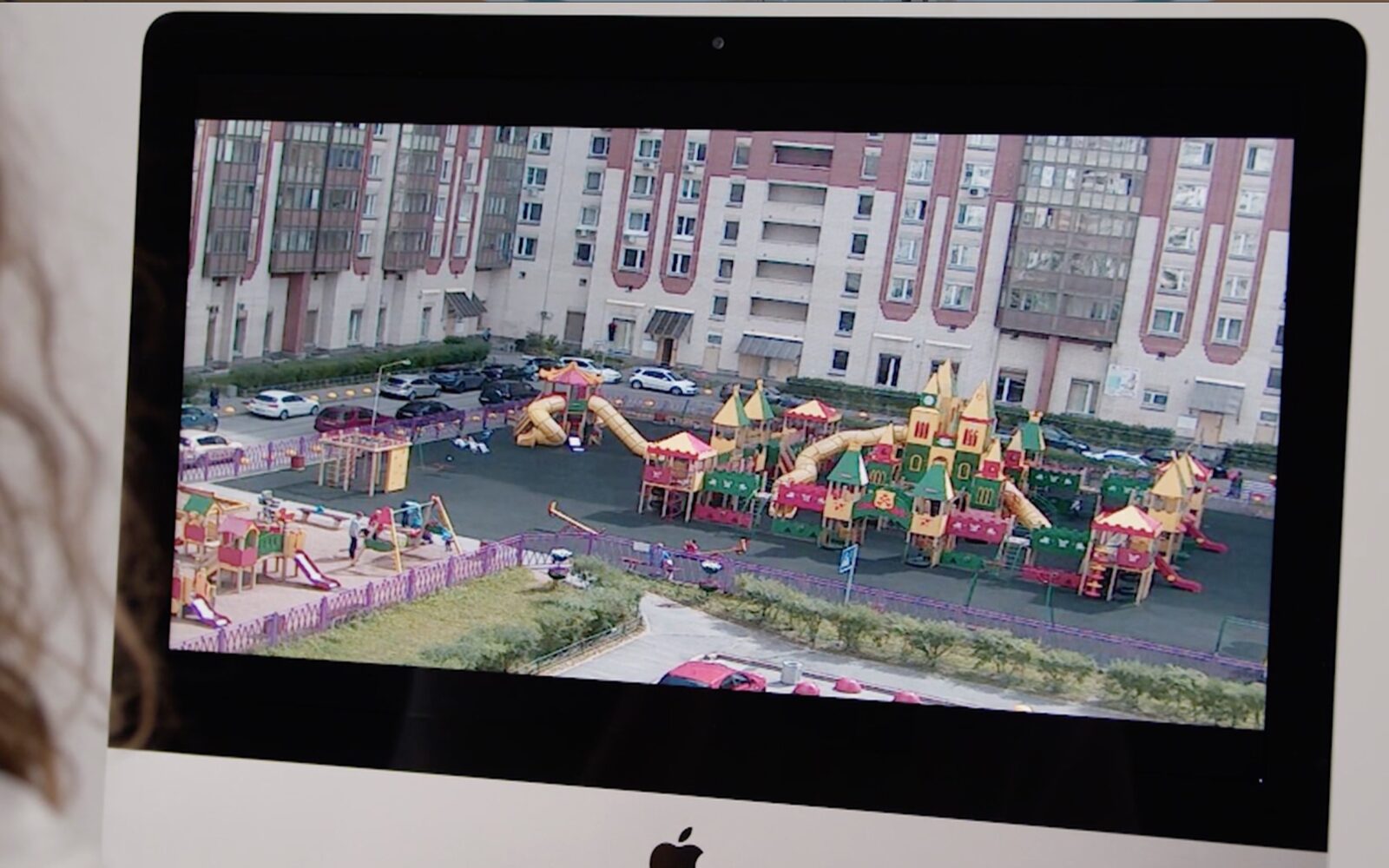Part one
My visit to Choronus Exhibition was a confusing yet adventurous experience, I would put it this way. Compared to other exhibitions of non-technology based artwork, the significance of the technology-based art pieces seemed to be rather ambiguous and indirect at the first encounter. Apart from looking for a literal introduction, I was always wondering “Is this project interactive? Can I touch it? What changes are taking place?” However, my past experience of non-technology based exhibitions were more straightforward. Although most of the time I need to actively think about the non-tech work’s meaning too, these tech-based artwork seems to require more active thinking and a full body interaction sometimes. Therefore, as a visitor, I have to be more active to recieve information or even generate information. Below attached are videos of a couple of projects from the exhibition.
PART TWO
The first interactive project that I researched into is ‘Self-Choreographing Network’(link shown in reference). It is “created by Mathias Maierhofer and Valentina Soana at the Institute for Computational Design and Construction (ICD / University of Stuttgart)”. This is a project “that aims to challenge the prevalent separation between (digital) design and (physical) operation processes of adaptive and interactive architectural systems”.
The other project that I looked into is “Ordinary Places” created by Anouk Zibaut. “The project makes use of surveillance cameras available and completely free of charge on the Insecam.org website. By Anouk’s desire to contemplate the ordinary, she used a selection of cameras to produce an experimental film. Idea here is to be able to edit the video streams she selected live to drive a narrative, themes and images to build a fictional story”. (Link to the full article is shown in the reference.) 
Unlike my first research when I decided that an immersive film experience (the Bomb) is less interactive than the other one in which the users interact with the installation by approaching it and seeing changes in its projection of a radio spectrum(Hertzian Landscapes) for by then I had contemplated on interaction as a process that requires more physical movements and the installation will respond in real-time according to those movements. However, this research and my experience in the Chronous Exhibition lead me to think in the other direction. I would say the second project “Ordinary Places” is more interactive to most users rather than the first project “Self-Choreographing Network”. Of course both projects require equal contribution to technical engineering and programming. While the first’s algorithm seems to be more complicated, its concept being a lot about movements, spatial arrangement and human-object interaction in real time, the second seems to be a medium that I, as an ordinary audience who might watch the “Ordinary Places”, am more familiar with. The fact that I am more familiar with the medium triggers more possible and profound interaction in my mind and life after I visited the installation. It is a matter about contemplation and reflection from the user themselves rather than the predetermined interaction in the first project (definitely no offense and I’m going to make a clarification about this statement).
To me personally, “Self-Choreographing Network” seems to be a complicated interaction. Though it doesn’t require so much pre-knowledge about how the creators made it, the concept itself seems foreign to me. Also, although the movement varies from time to time, the format is quite pre-determined. The variation is of course amazing and deserves my awe. Nonetheless, I wonder how long my curiosity will last and how soon it will be defeated by my confusion.
However, still, I think this is a question depending on the targeted audience. But for the second project “Ordinary Places”, although receiving information from a film-like format seems to be more passive on the surface. I think the fact that “surveillance in our daily life” is a subject that the targeted audience cares about so much that their curiosity and attention would immediately be drawn towards this installation/ film. It requires active commitment from the audience as long as they are intrigued by the subject and eager to understand. Therefore, it is not a one-way speech spoken towards anyone. Rather it is a mutual conversation happened in silence but in long term. We bring the confusion and inspiration back home and stay aware of the issue in days after that experience. For this point, “Self-Choreographing Network” will definitely do the same to its targeted audience. But for me at this point, “Ordinary Places” is a project that speaks more to me regarding its research subject. And it is more interactive for I will definitely be inspired and contemplate more in my life.
PART THREE
During my group project stage, I defined interaction/interactivity as:
a multi-actor participating process which normally conveys preset ideas and generates new messages in various relationships built by actors. Messages are conveyed through medium and received/ mutually communicated by different senses.
This definition is substantially supported by reading we’ve done in the first two weeks. In “What Exactly is Interactivity?”, Crawford chooses the word “conversation” and accordingly gives a concise definition of “interactivity”: “a cyclic process in which two actors alternately listen, think, and speak”.
However, when executing my mid-term project and watching other colleagues’ presentation of their mid-term projects, one thing that inspired me is: interactivity doesn’t necessarily have to be literally “multi-actor”. Of course, when speaking of “multi-actor”, we tend to include the installation itself. But for human part, one actor can be enough. Moreover, it doesn’t have to ambitiously involve “various relationships built by actors”. Rather, one single format, one relationship is adequate and efficient if the preset ideas are clear and inambiguous to the audience. Also, supported by my reflection over the research projects, I reckon that the level of interactivity also depends on the targeted audience. Are the audience related to and familiar with the research subject or the medium itself? In other words, if the audience are not familiar with the subject, then is the interface clear enough to inform them what to do and what to get? More importantly, interactivity never stops at the sensory levels such as hearing, speaking, smelling, seeing etc. It should ultimately involves thinking/reflecting or intuitively feeling something.
Based on these contemplation through experience, my improved definition of interaction/ interactivity is:
An experience that invites the other actor/ actors to activate their multiple senses and gives back real-time reactions. A higher level of interaction, however, will further stimulate an inner experience/ journey of mind contemplation and intuitive reflection rather than all kinds of external movements.
Reference
Choronus Exhibition
Self-Choreographing Network – Cyber-physical design and interactive bending-active systems
Self-Choreographing Network – Cyber-physical design and interactive bending-active systems
Lieux Ordinaries(Ordinary Places) – Surveillance as a storytelling medium
Lieux Ordinaires (Ordinary Places) – Surveillance as a storytelling medium
Individual Reflection of Group Project 1 by Haiyan Zhang
Individual Reflection of Group Project 1 by Haiyan Zhang
“What exactly is interactivity?” from The Art of Interactive Design, Crawford (pages 1-5)






